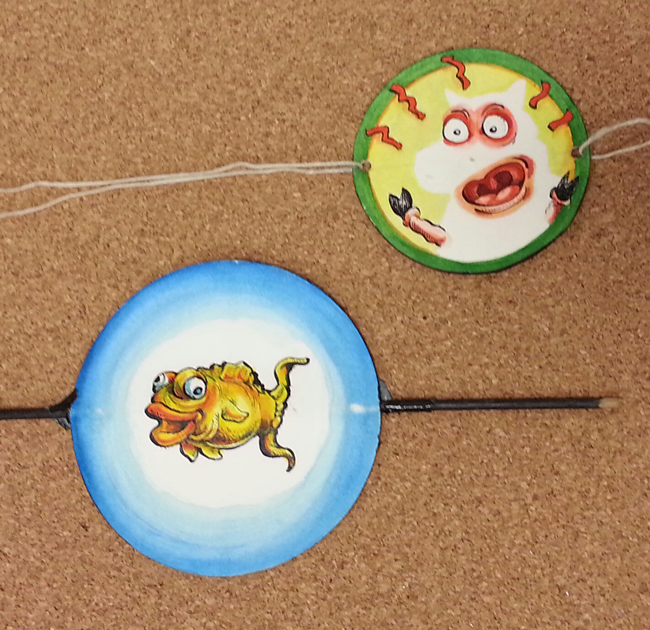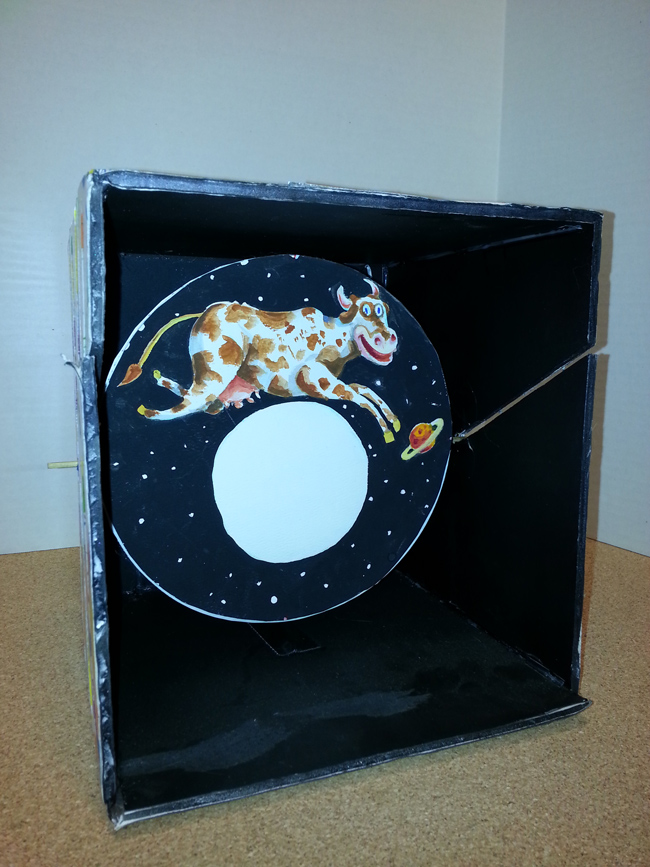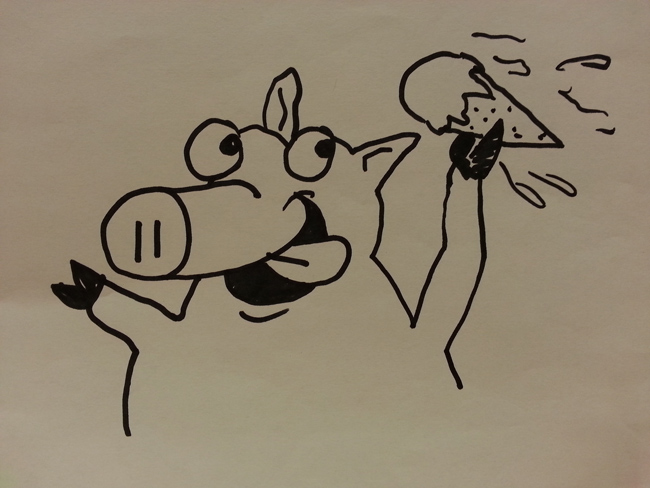| 1701-2 | Print | Close [X] |
Franz Spohn shares some projects featuring animation. Watch the video for this project online at:
|
 |
Age Range: 7 to 12 Grade Range: 2 to 6 Skill Level: Moderate Appropriate for: Supports Subject Area(s) of: Approximate time needed for project: On the move: Who hasn’t seen an example of animation? Artists create many individual “cels” that work together to create a sense of motion when the cels are arranged and shown at a high speed. Comic books and graphic novels also imply motion as one picture on a page is arranged next to another so as we read from one to another we get a sense that things have moved along. Flip books and thaumatropes are examples of simple animation devices. Storyboards are a series of drawings that outline the general idea for a segment of animation. A bird in a cage is a classic examples found on a thaumatrope. An empty cage is drawn on one side of a disk and a bird on a perch is drawn on another. When the disk is quickly spun the two images are retained in our vision so now the cage looks like the bird is inside it. A number of pages the same size are held or glued together (think of a note pad of paper) and an image is drawn on the first sheet. The same shape is drawn on the second sheet but the original image is drawn slightly off from the original position. This process continues for more pages so that when the pages are “flipped” the object appears to move! Telling a story that involves a duration of time often is done through panels…small drawings that when presented together create a story from beginning to end. Medieval paintings often had the entire story painted on one panel with some parts of the story in the background and some up front as if they all were happening at the same time. Comics have panels that usually start at the left and progress to end on the right. Think of a story or action or a simple movement of two objects that can work for a thaumatrope and create your own animation. Create Your Own Thaumatrope Directions:
|
Our Partners:
|
E-mail questions about Hands On Crafts for Kids to info@craftsforkids.com |







